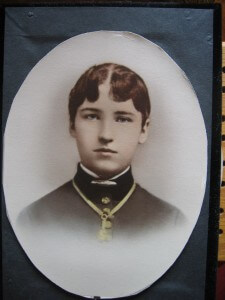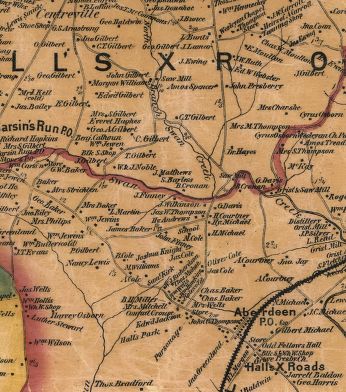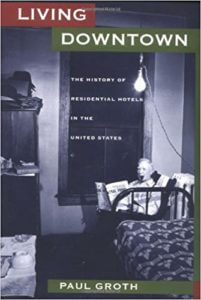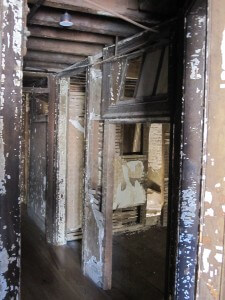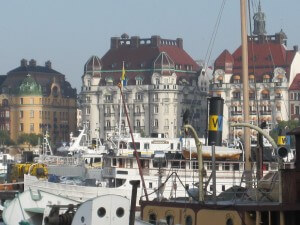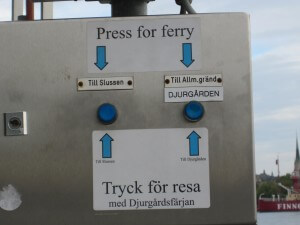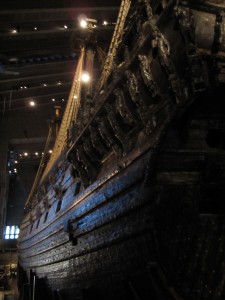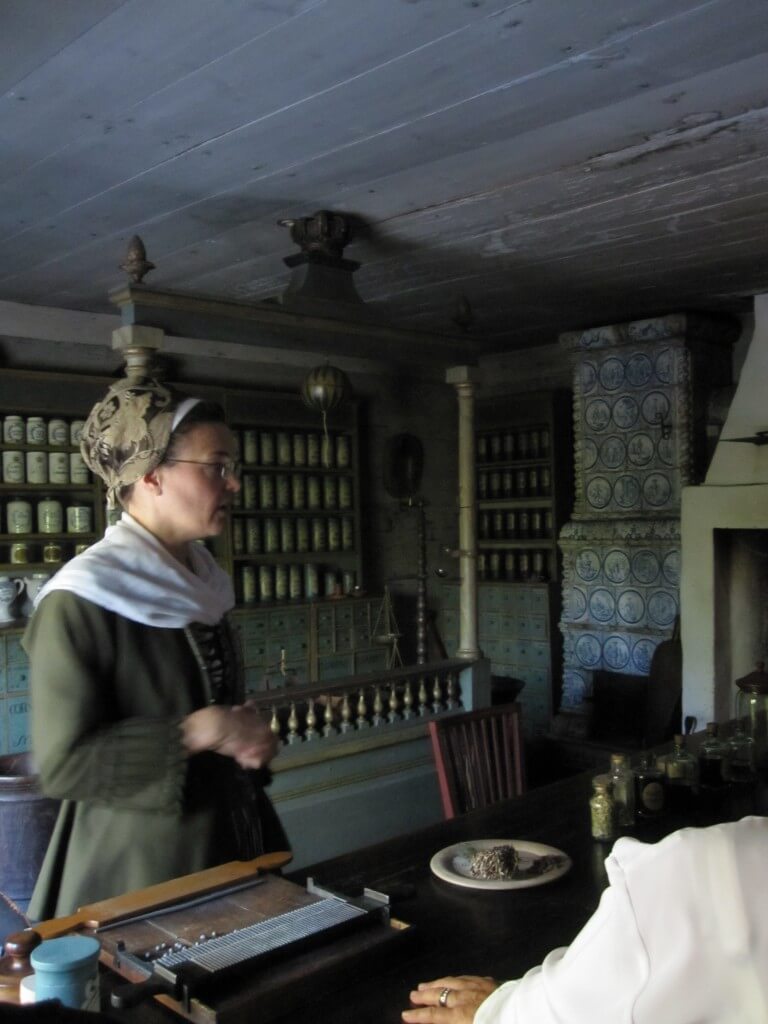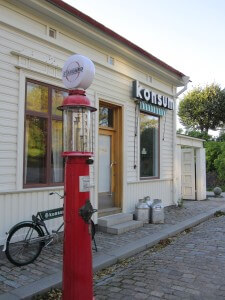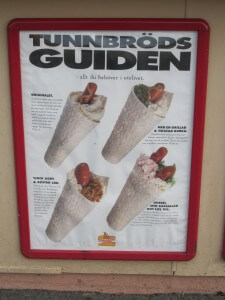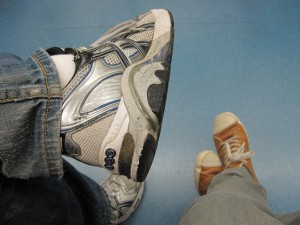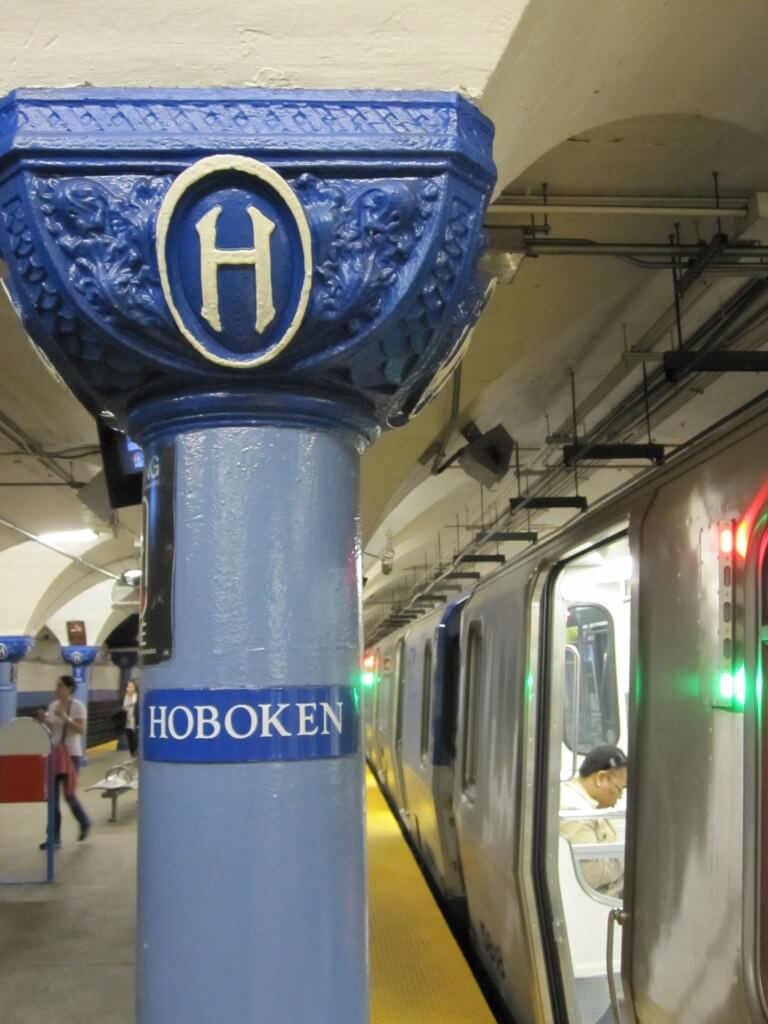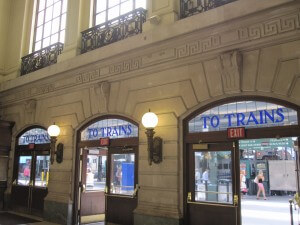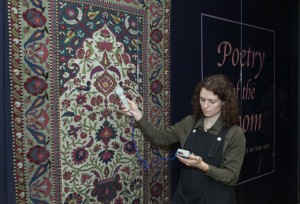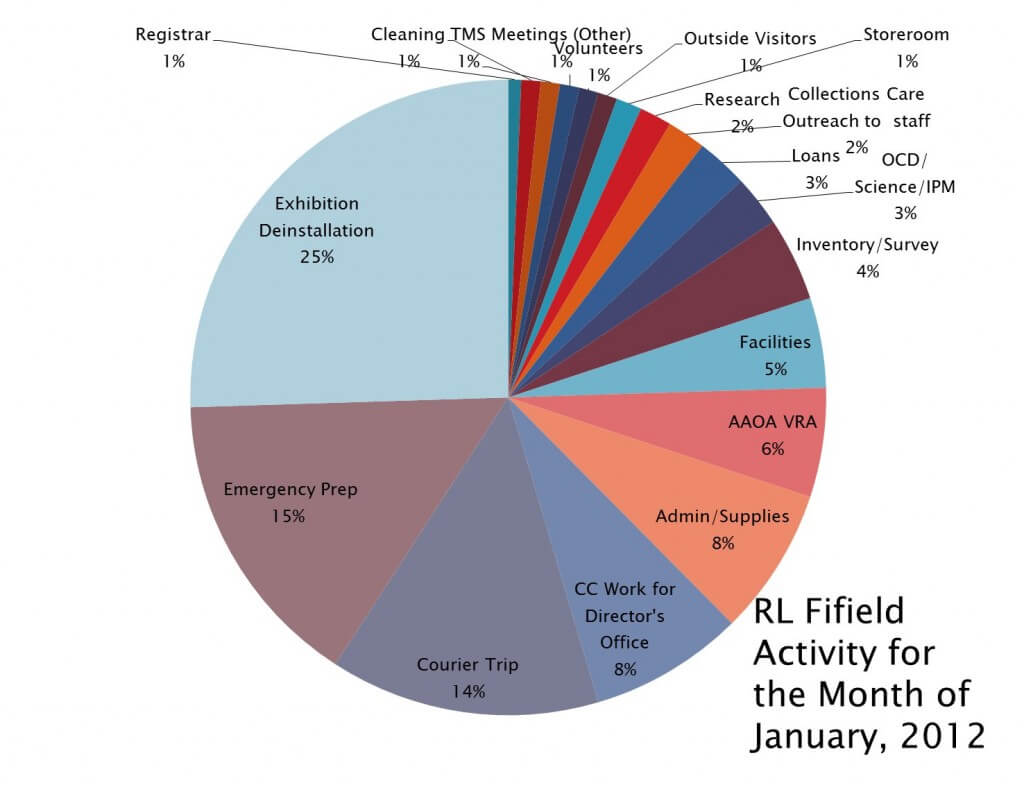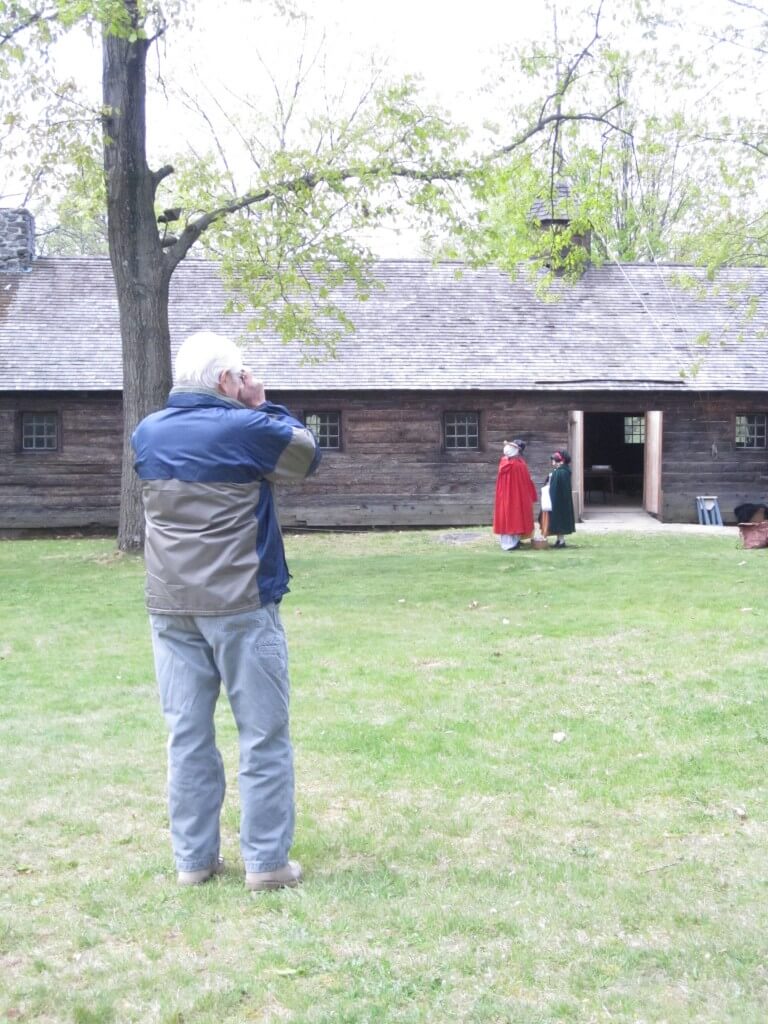
A visitor at New Windsor Cantonment photographs reenactors at the Brigade of the American Revolution’s School of Instruction, April 28, 2012. RL Fifield photo.
As living history interpreters, our role is to talk to the public about the past. We fill in the gaps in most schools’ history curriculums. Whereas they learned places, dates, and military maneuvers, I’m interested in filling in the details about social history and material culture during the eighteenth century.
Needless to say, I’m usually doing so while wearing reproductions of historic clothing – which looks cool. I tell them about the expense of textiles and the cheapness of labor. I let them touch the coarse worsted fabric of my gown, and let children rap on my torso, so they can get a sense of the stiffness of my stays (the English word for corset up until the 19th century). I show them the layers of petticoats I have on and the contents of my pockets, worn as a separate garment tied around my waist. The discussion often ends with a simple request “Can I get my daughter’s picture with you?”
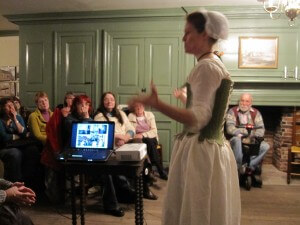
RL Fifield lecturing on women’s clothing and giving a dressing demonstration at the Bergen County Historical Society, 2011.
I’ve worked as an interpreter at museums as well as participated in reenacting from the time I was thirteen, so I have been photographed with other families for over twenty years. I cannot begin to estimate how many family albums I must appear in, with people I do not know. If, while flipping through their photo albums, people remember the experience and it continues their interest in history, I think that’s great.
Crowd turnout was incredible at the Battle of Brooklyn reenactment in August of 2001. I got the swell idea to turn the table, and start photographing the photographers. “Why are you photographing us?” they asked. I didn’t put them in my photo album exactly, but I remember them too – I love history, and I loved sharing it with them.

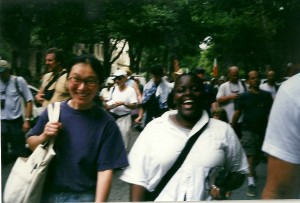
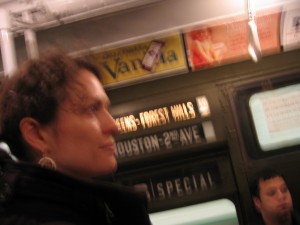
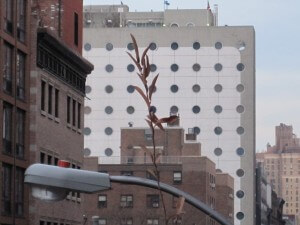
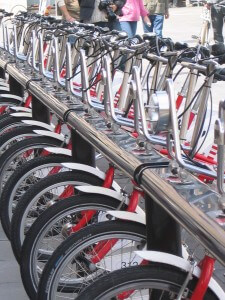
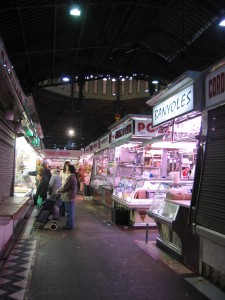
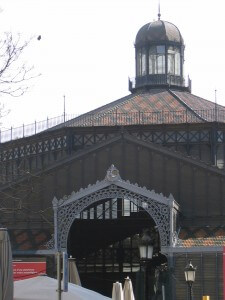
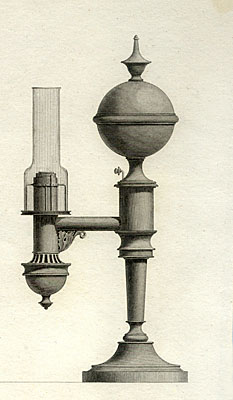 Barbara Carson was one of my professors in The George Washington University’s M.A. program in Museum Studies. I took her American Decorative Arts and Time and Light in the Decorative Arts courses, and was sorry I didn’t get to take her dining class – she hadn’t developed it by the time I graduated in 1999.
Barbara Carson was one of my professors in The George Washington University’s M.A. program in Museum Studies. I took her American Decorative Arts and Time and Light in the Decorative Arts courses, and was sorry I didn’t get to take her dining class – she hadn’t developed it by the time I graduated in 1999.
